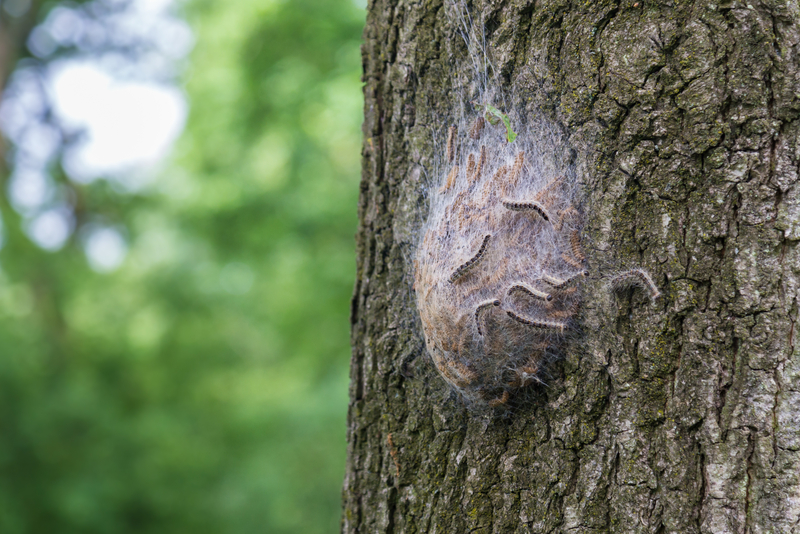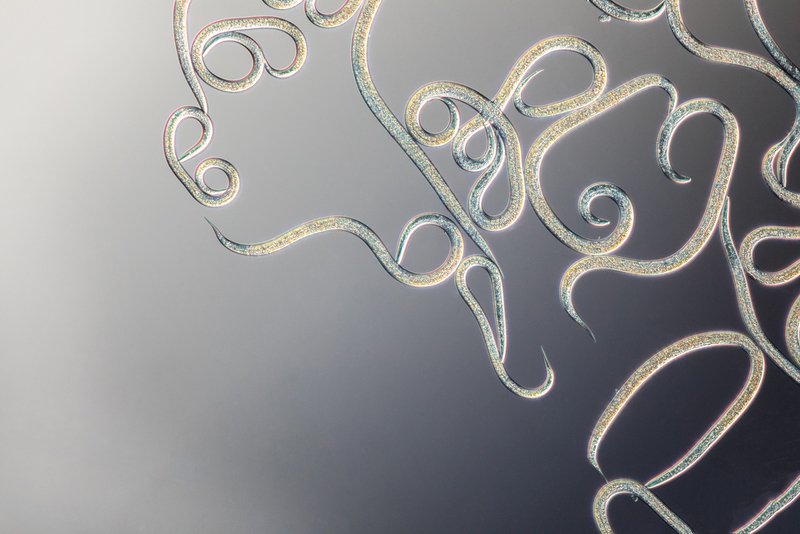
Once again, we have reached the time of year in which the oak processionary caterpillar causes problems. In recent years, the problems caused by the caterpillar have been getting worse making control a top priority, especially in European countries. Koppert recommends a dual strategy in which the caterpillars are tackled through the application of Steinernema feltiae nematode and moths are monitored and captured using a pheromone trap. This approach effectively rids you of these pests in a safe and natural way.
Young oak processionary caterpillars (Thaumetopoea processionea) love to eat the young leaves and buds of oak trees. This can lead to bare, ravaged spots. The affected tree also produces fewer and smaller acorns. This damage is not generally harmful to the tree, but sometimes a tree can be weakened to the extent that it dies.
The oak processionary caterpillar presents more of an issue for people. After the third larval stage, the caterpillars develop microscopic stinging hairs in addition to their normal hairs. These stinging hairs, which are the caterpillars’ defence mechanism, can cause rashes and respiratory infections (among other problems) in humans and animals.

Using nematodes to kill caterpillars
While the oak processionary caterpillar can cause problems, the good news is that there are effective products to tackle both caterpillars and moths. Our product Entonem uses active Steinernema feltiae nematodes which are very effective for combating caterpillars. When the nematodes come into contact with their prey, they penetrate the caterpillar through a natural body opening. The nematodes feed on the contents of the caterpillar, excreting specific bacteria – symbionts – from their digestive tract. The caterpillars then die within a few days.
The nematodes are most effective when they are used in the caterpillars’ first two larval stages. Younger caterpillars are easier to infect with the nematodes. This method prevents the caterpillars from reaching the stage when they develop the stinging hairs which cause so many problems.
Monitoring and capturing moths
There are other methods to combat the oak processionary caterpillar. When applying Entonem is no longer effective because the caterpillars have developed too far, Buxatrap can be used instead. This trap contains a specific oak processionary caterpillar-pheromone which is ideal for monitoring and capturing moths. The pheromone lures the male moths away, making mating impossible and resulting in fewer fertilized eggs being deposited.

Combined application makes for an effective weapon
The combined use of Entonem and the Buxatrap is the most effective way to safely and naturally combat the oak processionary caterpillar.
The life cycle of the oak processionary caterpillar:
-
Oak processionary caterpillar eggs hatch in April. You can find the eggs on oak tree twigs and branches facing south.
-
When the caterpillars start to hatch, they are orange. After moulting five times, they become a mottled grey-and-green colour with a pale stripe along the side.
-
After the fourth larval stage, roughly in the second half of May, they gather to make a nest. The nests consist of silk from the moulted skins, stinging hairs, and excrement. You can usually find these nests on the trunk or in axils of the tree. The caterpillars search for food by night. As they leave their nest, they form a row, or a procession; the behaviour that gives this creature its name.
-
During the late summer, the caterpillars pupate in their nests for protection from enemies. If the weather is too warm, the caterpillars will make a nest on the ground where it's a bit cooler.
-
Moths emerge from the pupae between the end of July and the beginning of October. The moths also have stinging hairs on their bodies, but far fewer than the caterpillars. Although the moths live for a week or so, they can lay a relatively large number of eggs that give rise to next year's caterpillars.